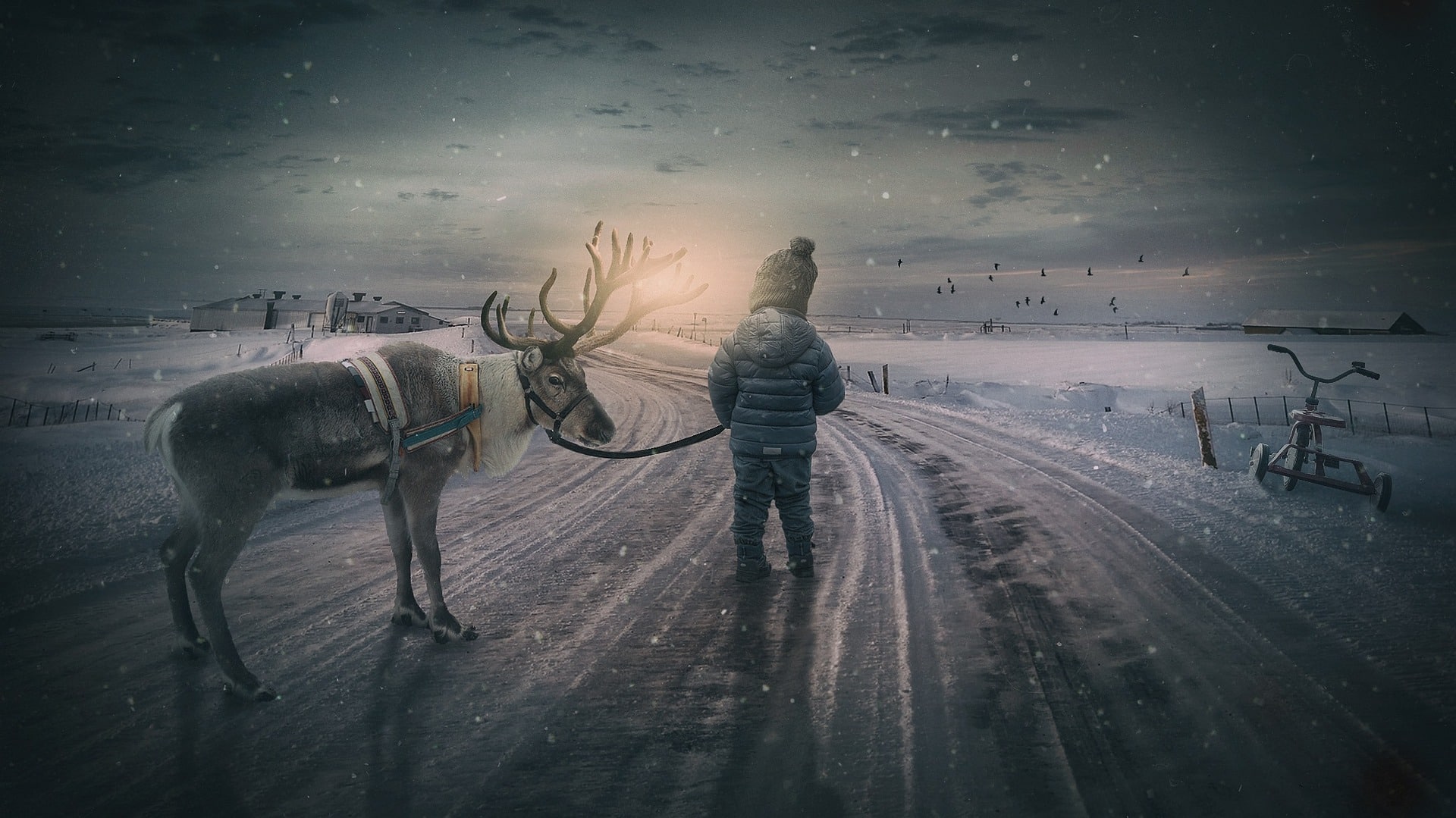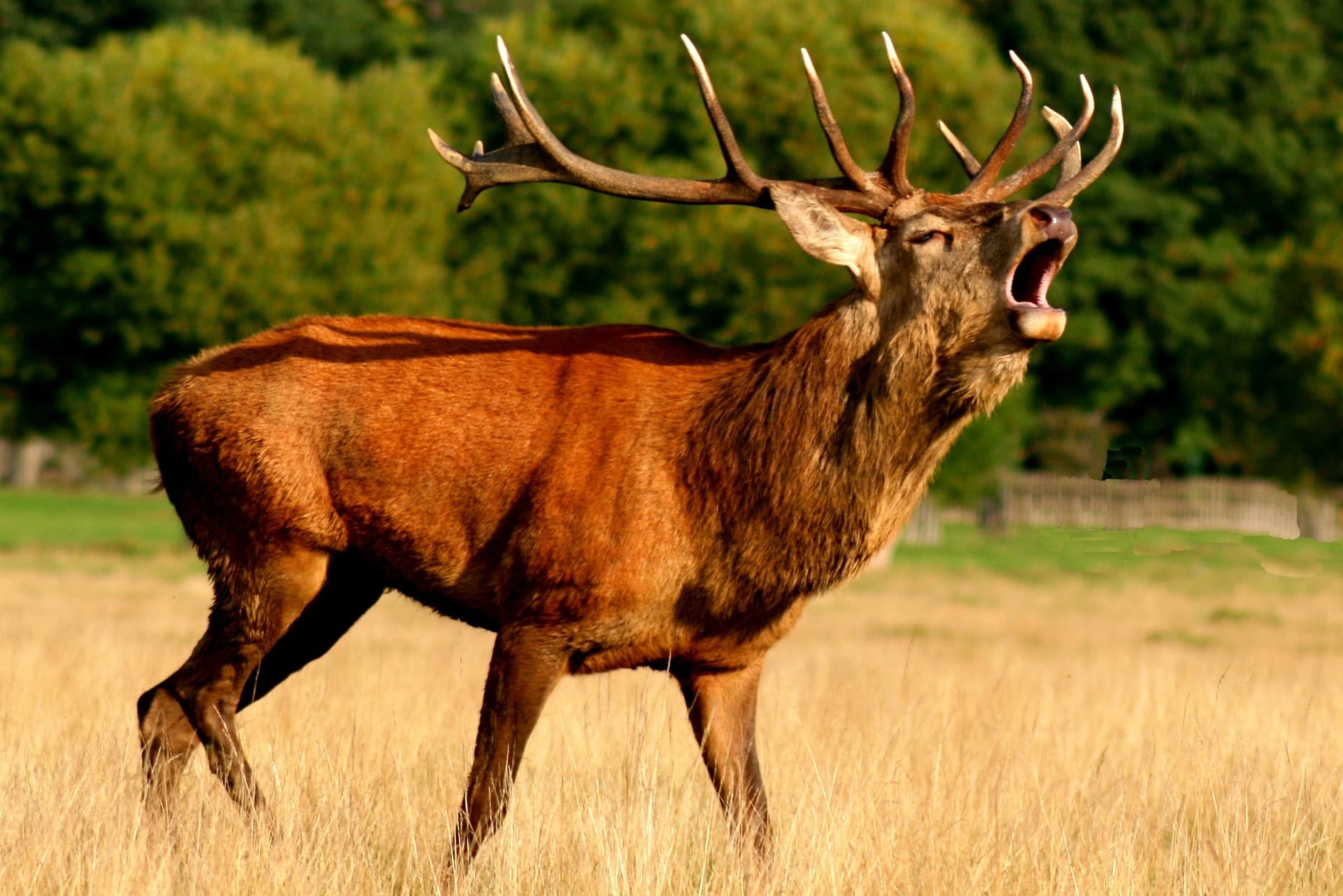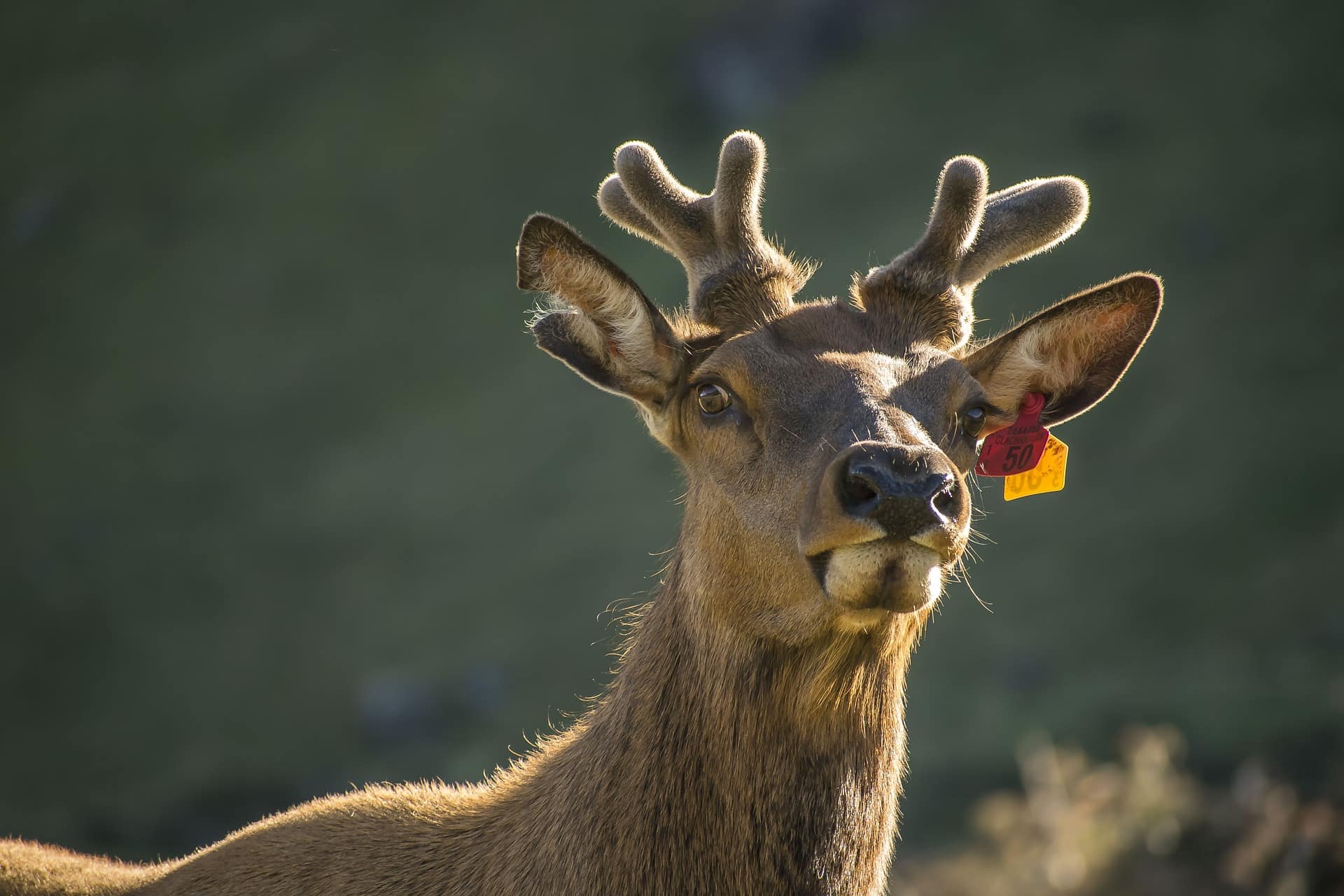
Every year, reindeer migrate thousands of kilometers during the change of seasons, making it the longest land migration in history. But do you really know where they come from?
Caribou are large herds of deer that live in the cold tundra plains of Eurasia and northern North America (where it is called caribou). It feeds on grasses, mosses, lichens, birch and willow bark.
In this species, which is the only example among deer, females also have smaller horns than males, which change from year to year. Reindeer have extra wide and widely spaced hooves that allow them to walk easily over snow and swamps. The characteristic sounds that reindeer make when walking are not due to their horns, as previously thought, but rather to the movement of their tendons.
How do reindeer survive extreme cold?

Reindeer have developed some adaptations to live in cold and often inhospitable environments. The horns are well stretched and its legs are strong. so they can easily keep their balance even when walking long distances in the snow.
What is a caribou?
"Caribou" is one of the names by which the reindeer is known; the scientific name is Rangifer tarandus. The genus Rangifer includes several subspecies of reindeer spread over different continents. The imposing size is one of the characteristics that distinguish the different species.
Where are caribou found?
Most of these arctic animals they live in the northern tundra or arctic islands above the tree line. Many examples can also be found in Finland and Siberia. The latter are known as forest reindeer and spend their entire lives in the forest.
But how do reindeer survive?
They are adapted to live in this type of environment. They have some properties that make them unique and that allow them to resist these freezing temperatures of the tundra:
- thick fur
- flared hooves
- wide, warm nostrils
- ultraviolet light viewer
But let's see in detail:
The fur
The fur that covers these four-legged creatures has shades of dark brown, gray and white and it is one of the warmest that exists, since it traps the air and isolates the body from the outside world.
This is very abundant throughout the body, but especially around the neck area, which makes it look like they are wearing a long hair or scarf around the neck.
His big hooves
The most interesting thing is that, like its distant cousin the camel, hooves can be extended to better find new snow instead of sinking, and you have the biggest plants to lean on (just like a camel doesn't sink in the desert sand). In addition, the pads under the feet are soft to ensure a better grip on the grass.
However, as the cold becomes more noticeable, they manage to contract their side claws, reducing their size to push them to make forays into frozen ground and harder snow.
Nostrils that change in size
In areas where reindeer live, breathing is a problem because cold air enters the lungs and rapidly cools the body, but reindeer are also prepared for that. Their nostrils have nasal cavities called turbinates, which allow them to control their size so they can better filter cold air.. So they can breathe without cooling the lungs and keep the body warm.
An unbeatable view
You could say that has a peculiar vision, since they are the only mammals on the planet capable of seeing ultraviolet light. This is very useful to them in frigid and arctic environments because it allows them to see things that they could not see without having this ability. The human being is not capable of seeing the same as the reindeer.
Doesn't that already make them spectacular beings?
General characteristics of the reindeer
Females tend to live longer than males, as in most animals. And the male is bigger in terms of size. This does not differ from almost all species of terrestrial animals.
It is also curious that the size of the reindeer is different depending on the area where they were born. Reindeer populations that live in southern latitudes are larger than those that live in the north. The males, as we have commented, are larger than the females, and are usually about 150-120 cm in length and weigh between 60 and 318 kilos.
They have branched horns (called antlers) that also vary from specimen to specimen. What's more, you will never find two reindeer that have the same antlers, although it seems hard to believe.
Animals with which they have to lose if they face them
Reindeer are usually quite powerful and hardly any animal can beat them, even so, if they meet bears or wolves they will surely end up losing. But not only do they face great dangers from beasts bigger or more ferocious than them, but they also have another threat... birds of prey, although they attack puppies more or those specimens that are injured. They will hardly face a full-fledged reindeer. However, reindeer cubs often follow their mother within hours of birth, making them difficult prey. And they grow so fast that in a matter of months they are running around and feeding themselves.
And what do they eat? Above all the lichen that they can find under the snow, but they also feed on the leaves of trees and grass, which they find easily thanks to their great sense of smell.
They usually live in herdsThey are not solitary animals but like to live in groups. And although we have the belief that they can be tamed, a belief that is partly marked by the image of Santa Claus with the reindeer, we could say that they are half-domesticable animals. That is to say, they can be used to drag Pulks, which are the Scandinavian sleds that we have seen in Santa Claus movies, but we will not be able to give them orders as if they were a dog.
The problem of climate change
Unfortunately, there are fewer and fewer reindeer specimens because of climate change. What's more, there are several species of reindeer that have become extinct.
How are the reindeer

Reindeer are one of the few animals on Earth that are capable of making very long migrations. When we say very long we mean 5000 km a year, which is said soon. Normally, when spring or autumn arrives, the reindeer move away from the arctic areas to find a little less cold towards warmer pastures. They are made to withstand low temperatures, but they have their limits. And another peculiarity is the speed at which they can go: 80 km/h.
When the breeding season arrives, it is time to reserve energy, so the males stop eating and devote themselves practically only to conquering the females. Each of them conquers about 5 or 15 females, and must fight with other males in almost each of those conquests... that's why they need so much energy. It can be said that this frenetic mating activity leaves them exhausted and full of wounds, but satisfied.
Females normally give birth once a year.. And the small reindeer are born with a weight of about 3 to 12 kilos, but they quickly gain weight because a few minutes after being born they begin to suckle, in a single hour they are already able to support themselves with their legs and follow their mother on their own feet, and at just one month old they can graze alone.
Before we have commented that the females were longer-lived, but do you know how much longer? A male usually lives about 5 years or less, unlike females who can live up to 15 years.
What do reindeer eat?
The reindeer's diet depends a bit on what time of year they are. In summer they tend to eat grass, tree leaves, moss, mushrooms, grasses and ferns more.. In winter it is more difficult to find food so they survive on moss and lichen, preferably the latter. It should be said that although this is the main diet of reindeer it can also vary, for example, there are some that eat lemmings, bird eggs and savelins on certain occasions, but it is not usual.
The reindeer and the man
For many years the human being has approached this animal and has tried to domesticate it. It's not surprising It is a strong, herbivorous and very resistant animal. And it has also served as food for humans since ancient times. Humans killed them not only for their meat or milk but also for their skins, horns, and bones, from which they made clothing and tools.
What is different about a caribou and a reindeer?
It is the same species of mammal but the reindeer, as we properly know it, is the reindeer that has been able to be domesticated to carry pulks. However, the caribou, a word that comes from the word Mi'kmaq Qalipu (pronounced hal-lay-boo ) and which means "snow shovel", is the reindeer with wider hooves, more than the reindeer.
Antlers, no two are the same
reindeer antlers are bony appendages that grow on your head year after year, that is, every year they fall off and new ones come out. When they fall off, it doesn't take long for them to grow new ones, each day they grow up to 2 cm. This feature is also unique among mammals. And also, each reindeer has antlers in a way, always different from any other reindeer. No two reindeer have the same shape of antlers.
Their horns are a great source of food for other animals.
The horns that are renewed every year and that fall off are not forgotten. They are a food rich in calcium and minerals that other animals such as rheoids, among others, know how to take advantage of it.
Reindeer milk is considered one of the most nutritious milks that exists on our planet.
Reindeer milk is considered one of the most nutrient-dense of all mammalian milks on Earth. It has a high percentage of fat (22%) and protein (10%). If we compare, for example, the fat in cow's milk with that of the reindeer, we see that the cow's is only 3 or 4%.